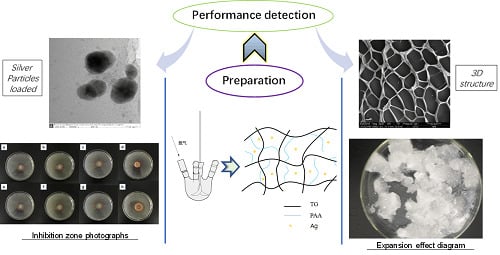Antibacterial Superabsorbent Polymers from Tara Gum Grafted Poly(Acrylic acid) Embedded Silver Particles
Abstract
:1. Introduction
2. Materials and Methods
2.1. Materials
2.2. Preparation of TG/Ag Composite Superabsorbent Polymers
2.3. Characterization Methods
2.4. Antibacterial Test
2.5. Swelling Studies
3. Results and Discussion
3.1. The Networks of TG/Ag Composite Superabsorbent Polymers
3.2. FTIR Spectroscopy
3.3. Size and Morphology of Ag Particles
3.3.1. XRD Analysis
3.3.2. TEM Analysis
3.3.3. XPS Spectroscopy
3.3.4. SEM Analysis
3.4. Antibacterial Properties of TG/Ag Composite Superabsorbent Polymers
3.5. Swelling Behavior in Distilled Water and 0.9% NaCl Solution
4. Conclusions
Author Contributions
Acknowledgments
Conflicts of Interest
References
- Yadollahi, M.; Gholamali, I.; Namazi, H.; Aghazadehb, M. Synthesis and characterization of antibacterial carboxymethyl cellulose/ZnO nanocomposite hydrogels. Biol. Macromol. 2005, 74, 136–141. [Google Scholar] [CrossRef] [PubMed]
- Alla, S.G.A.; Sen, M.; El-Naggar, A.W.M. Swelling and mechanical properties of superabsorbent hydrogels based on Tara gum/acrylic acid synthesized by gamma radiation. Carbohydr. Polym. 2012, 89, 478–485. [Google Scholar] [CrossRef] [PubMed]
- Wei, Y.-S.; Chen, K.-S.; Wu, L.-T. In situ synthesis of high swell ratio polyacrylic acid/silver nanocompositehydrogels and their antimicrobial properties. Inorg. Biochem. 2016, 164, 17–25. [Google Scholar] [CrossRef] [PubMed]
- Anjum, S.; Gurave, P.M.; Gupta, B. Calcium ion-induced self-healing pattern of chemically crosslinked poly (acrylic acid) hydrogels. Polym. Int. 2018, 67, 250–257. [Google Scholar] [CrossRef]
- Matharu, R.K.; Porwal, H.; Ciric, L.; Edirisinghe, M. The effect of graphene-poly(methyl methacrylate) fibres on microbial growth. Interface Focus 2018, 8, 20170058. [Google Scholar] [CrossRef] [PubMed]
- Heseltine, P.L.; Ahmed, J.; Edirisinghe, M. Developments in Pressurized Gyration for the Mass Production of Polymeric Fibers. Macromol. Mater. Eng. 2018, 1800218. [Google Scholar] [CrossRef]
- Boda, S.K.; Li, X.; Xie, J. Electrospraying an enabling technology for pharmaceutical and biomedical applications: A review. J. Aerosol Sci. 2018. [Google Scholar] [CrossRef]
- Balasundaram, G.; Webster, T.J. An overview of nano-polymers for orthopedic applications. Macromol. Biosci. 2007, 7, 635–642. [Google Scholar] [CrossRef] [PubMed]
- Bardajee, G.R.; Hooshyar, Z.; Rezanezhad, H. A novel and green biomaterial based silver nanocomposite hydrogel: Synthesis, characterization and antibacterial effect. J. Inorg. Biochem. 2012, 117, 367–373. [Google Scholar] [CrossRef] [PubMed]
- Pham, D.C.; Nguyen, T.H.; Ngoc, U.T.P.; Le, N.T.T.; Tran, T.V.; Nguyen, D.H. Preparation, Characterization and Antifungal Properties of Chitosan-Silver Nanoparticles Synergize Fungicide Against Pyricularia oryzae. J. Nanosci. Nanotechnol. 2018, 18, 5299–5305. [Google Scholar] [CrossRef] [PubMed]
- Hua, S.; Wang, A. Synthesis, characterization and swelling behaviors of sodium alginate-g-poly(acrylic acid)/sodium humate superabsorbent. Carbohydr. Polym. 2009, 75, 79–84. [Google Scholar] [CrossRef]
- Luo, Z.; Chen, H.; Wu, J.; Xia, X.; Liu, H.; Yang, L. Surface Modification of Short Carbon Fibers with Carbon Nanotubes to Reinforce Epoxy Matrix Composites. J. Nanosci. Nanotechnol. 2018, 18, 4940–4952. [Google Scholar] [CrossRef]
- Ma, X.; Wei, R.; Cheng, J.; Cai, J.; Zhou, J. Synthesis and characterization of pectin/poly(sodium acrylate) hydrogels. Carbohydr. Polym. 2011, 86, 313–319. [Google Scholar] [CrossRef]
- Marambio-Jones, C.; Hoek, E.M.V. A review of the antibacterial effects of silver nanomaterials and potential implications for human health and the environment. J. Nanopart. Res. 2010, 12, 1531–1551. [Google Scholar] [CrossRef]
- Merga, G.; Wilson, R.; Lynn, G.; Milosavljevic, B.H.; Meisel, D. Redox catalysis on “Naked” silver nanoparticles. J. Phys. Chem. C 2007, 111, 12220–12226. [Google Scholar] [CrossRef]
- Huong, P.T.L.; Son, T.V.; Phan, V.N.; Tam, L.T.; Le, A.T. Microstructure and Chemo-Physical Characterizations of Functional Graphene Oxide-Iron Oxide-Silver Ternary Nanocomposite Synthesized by One-Pot Hydrothermal Method. J. Nanosci. Nanotechnol. 2018, 18, 5591–5599. [Google Scholar] [CrossRef] [PubMed]
- Qian, S.; Zhang, F.; Liu, B.; Ren, H.; Tong, G. Polyacrylate-based Water-absorbent Hydrogels Prepared with Lignin-related Compounds: Process Conditions and Performance. Bioresources 2017, 12, 6607–6617. [Google Scholar] [CrossRef]
- Raffi, M.; Rumaiz, A.K.; Hasan, M.M.; Shah, S.I. Studies of the growth parameters for silver nanoparticle synthesis by inert gas condensation. J. Mater. Res. 2007, 22, 3378–3384. [Google Scholar] [CrossRef]
- Rodrigues, M.; Genc, A.; Arbiol, J.; Amabilino, D.B.; Perez-Garcia, L. In situ template synthesis of gold nanoparticles using a bis-imidazolium amphiphile-based hydrogel. J. Colloid Interface Sci. 2015, 446, 53–58. [Google Scholar] [CrossRef] [PubMed]
- Vollmer, A.; Avci, E.; Thiel, K.; Donner, C. Electrochemical silver deposition on adsorbate modified Au (111) electrode. J. Electroanal. Chem. 2007, 605, 15–23. [Google Scholar] [CrossRef]
- Kim, M.H.; Park, H.; Nam, H.C.; Park, S.R.; Jung, J.Y.; Park, W.H. Injectable methylcellulose hydrogel containing silver oxide nanoparticles for burn wound healing. Carbohydr. Polym. 2018, 181, 579–586. [Google Scholar] [CrossRef] [PubMed]
- Yadollahi, M.; Farhoudian, S.; Namazi, H. One-pot synthesis of antibacterial chitosan/silver bio-nanocomposite hydrogel beads as drug delivery systems. Int. J. Biol. Macromol. 2015, 79, 37–43. [Google Scholar] [CrossRef] [PubMed]
- Wu, Y.; Yang, Y.; Zhang, Z.; Wang, Z.; Zhao, Y.; Sun, L. A facile method to prepare size-tunable silver nanoparticles and its antibacterial mechanism. Adv. Powder Technol. 2018, 29, 407–415. [Google Scholar] [CrossRef]
- Zhang, X.; Pan, X.-Y.; Zhang, Q.-F.; Jiang, H.-B.; Liu, C.-L.; Wu, J.-L. The preparation of silver oxide nanoparticles and their dynamic excitation fluorescence. J. Phys. Chem. 2003, 3, 203–207. [Google Scholar]
- Ali, G.W.; El-Hotaby, W.; Hemdan, B.; Abdel-Fattah, W.I. Thermosensitive chitosan/phosphate hydrogel-composites fortified with Ag versus Ag@Pd for biomedical applications. Life Sci. 2018, 194, 185–195. [Google Scholar] [CrossRef] [PubMed]

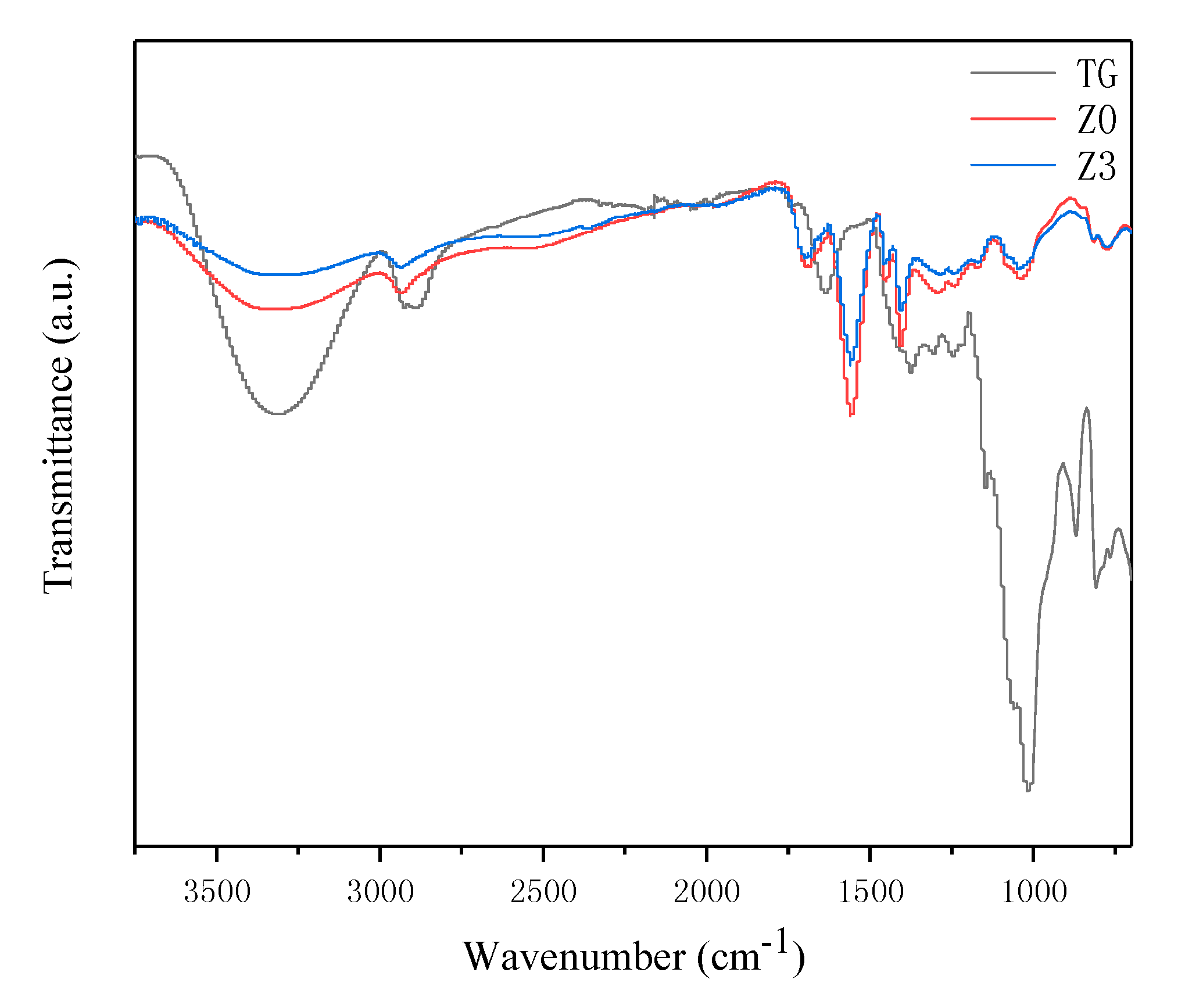
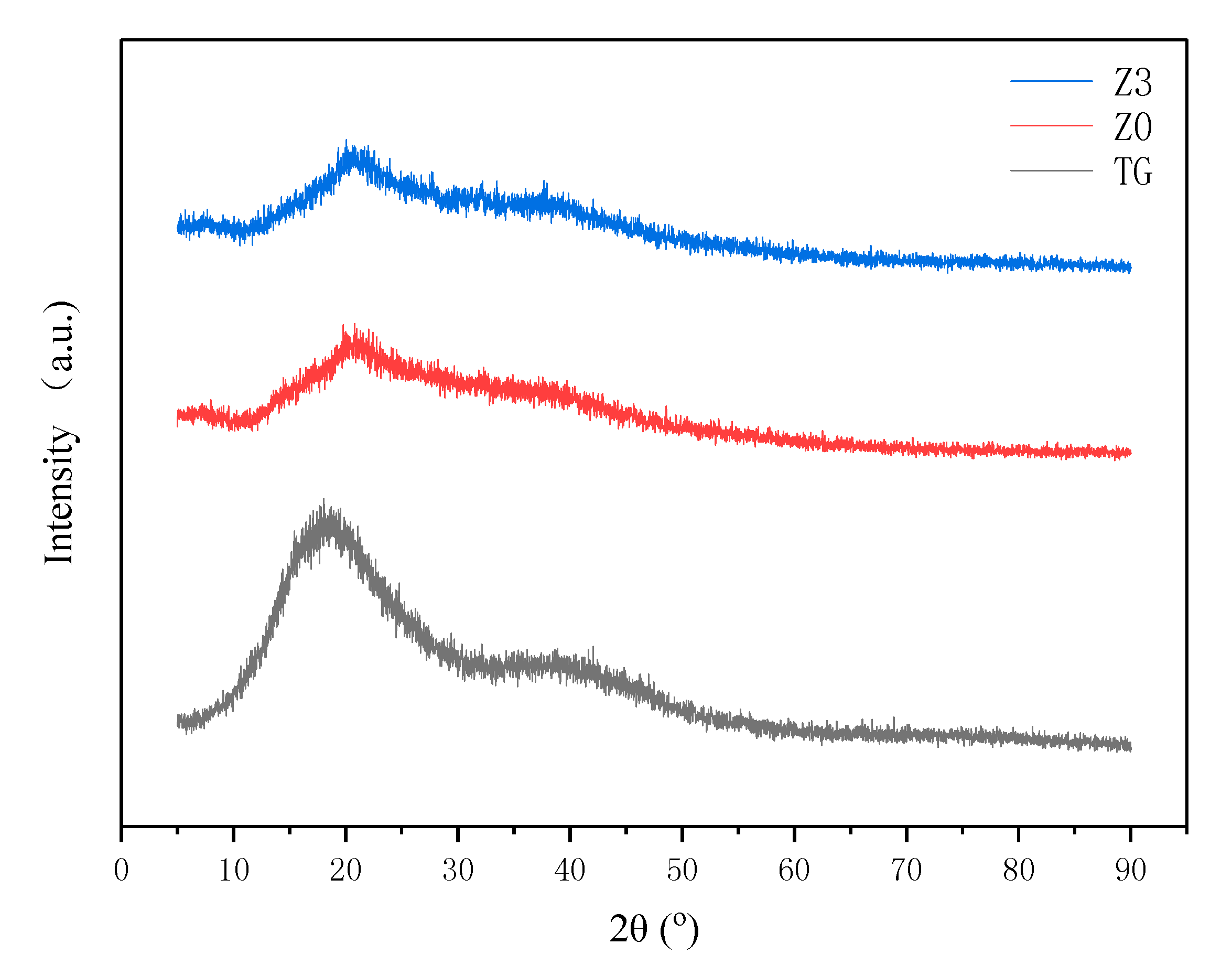

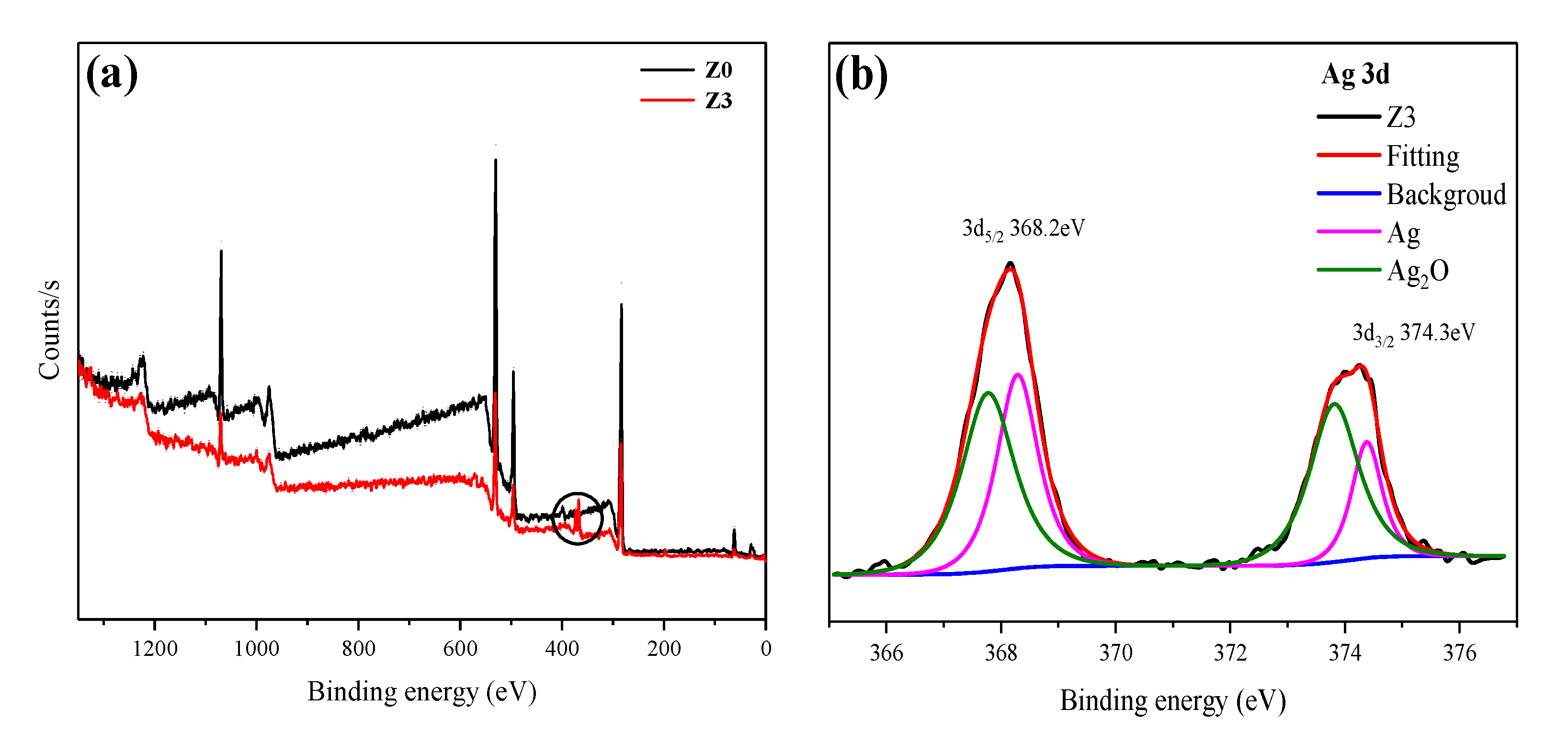
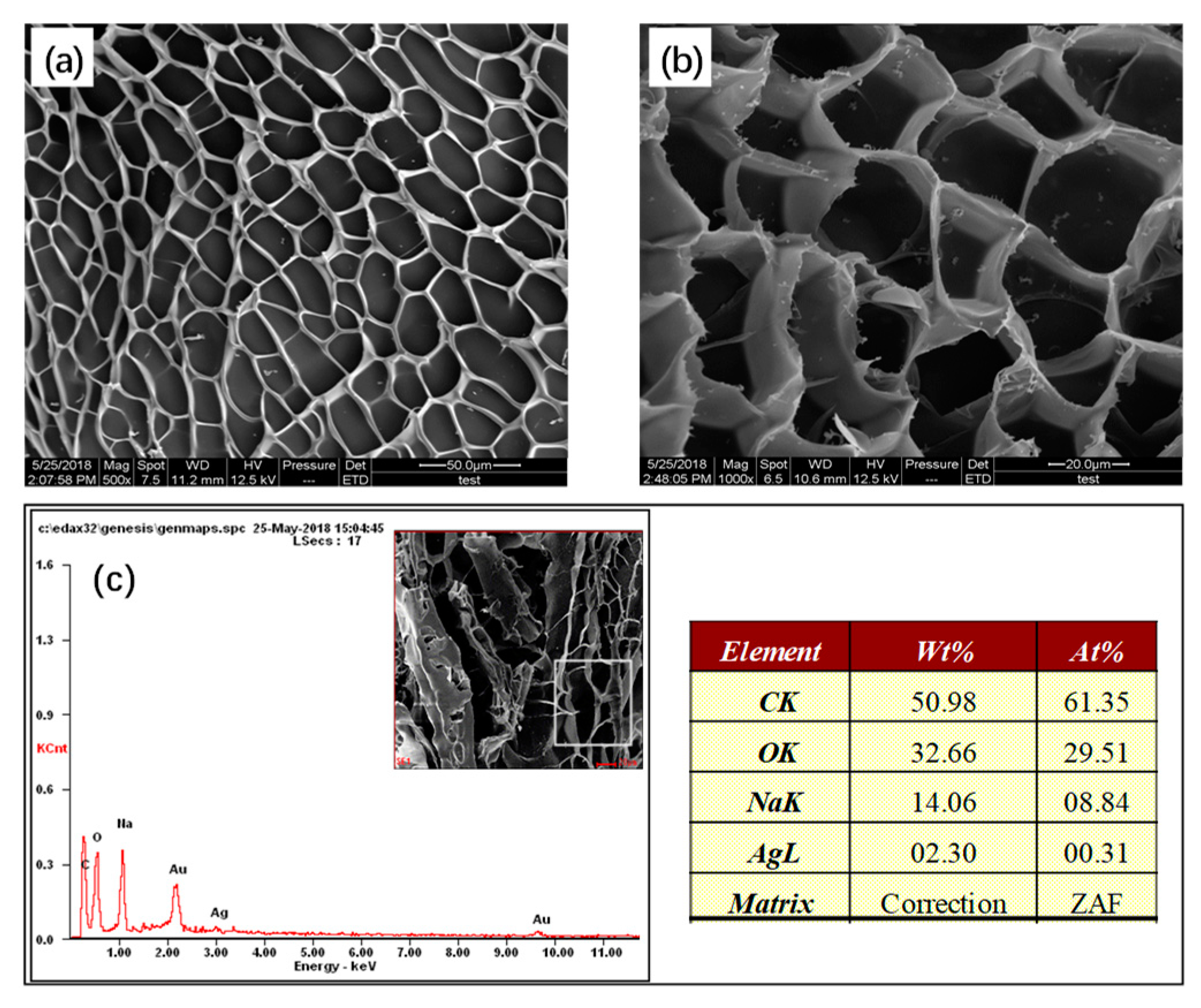
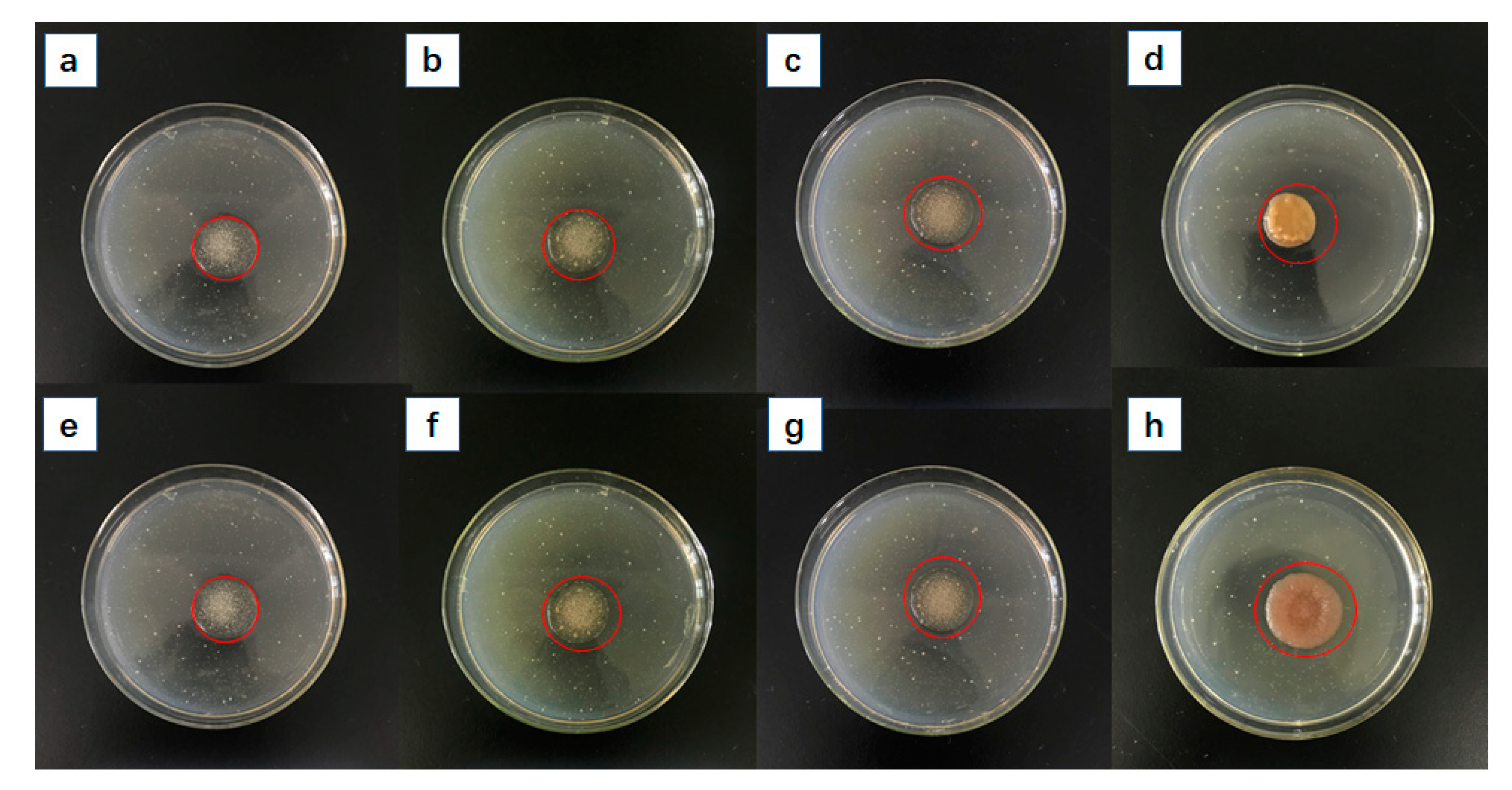
| Sample | AgNO3 (mg) | Bacteriostatic Ring of S. aureus (cm) | Bacteriostatic Ring of E. coli (cm) |
|---|---|---|---|
| Z0 | 0 | 2.4 | 2.4 |
| Z1 | 5 | 2.6 | 2.5 |
| Z2 | 30 | 2.8 | 2.7 |
| Z3 | 125 | 3.5 | 3.2 |
| Sample | AgNO3 (mg) | Absorption of Water (g/g) | Absorption of Water in 0.9% NaCl Solution (g/g) |
|---|---|---|---|
| Z0 | 0 | 473 | 62 |
| Z1 | 5 | 332 | 51 |
| Z2 | 30 | 324 | 49 |
| Z3 | 125 | 273 | 37 |
© 2018 by the authors. Licensee MDPI, Basel, Switzerland. This article is an open access article distributed under the terms and conditions of the Creative Commons Attribution (CC BY) license (http://creativecommons.org/licenses/by/4.0/).
Share and Cite
Chi, M.; Liu, C.; Shen, J.; Dong, Z.; Yang, Z.; Wang, L. Antibacterial Superabsorbent Polymers from Tara Gum Grafted Poly(Acrylic acid) Embedded Silver Particles. Polymers 2018, 10, 945. https://doi.org/10.3390/polym10090945
Chi M, Liu C, Shen J, Dong Z, Yang Z, Wang L. Antibacterial Superabsorbent Polymers from Tara Gum Grafted Poly(Acrylic acid) Embedded Silver Particles. Polymers. 2018; 10(9):945. https://doi.org/10.3390/polym10090945
Chicago/Turabian StyleChi, Mingfang, Chang Liu, Jie Shen, Zhehai Dong, Zi Yang, and Lijuan Wang. 2018. "Antibacterial Superabsorbent Polymers from Tara Gum Grafted Poly(Acrylic acid) Embedded Silver Particles" Polymers 10, no. 9: 945. https://doi.org/10.3390/polym10090945
APA StyleChi, M., Liu, C., Shen, J., Dong, Z., Yang, Z., & Wang, L. (2018). Antibacterial Superabsorbent Polymers from Tara Gum Grafted Poly(Acrylic acid) Embedded Silver Particles. Polymers, 10(9), 945. https://doi.org/10.3390/polym10090945



